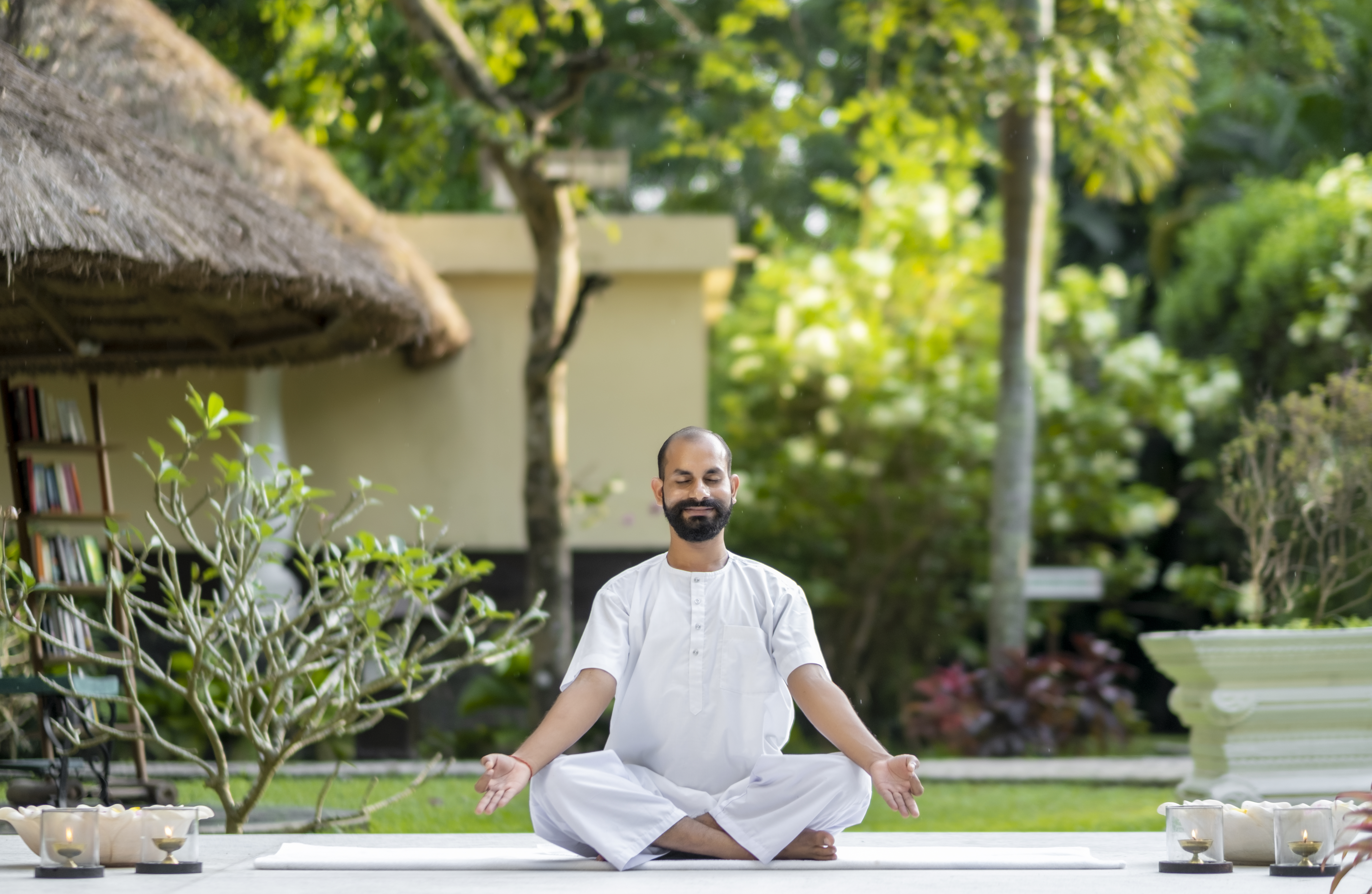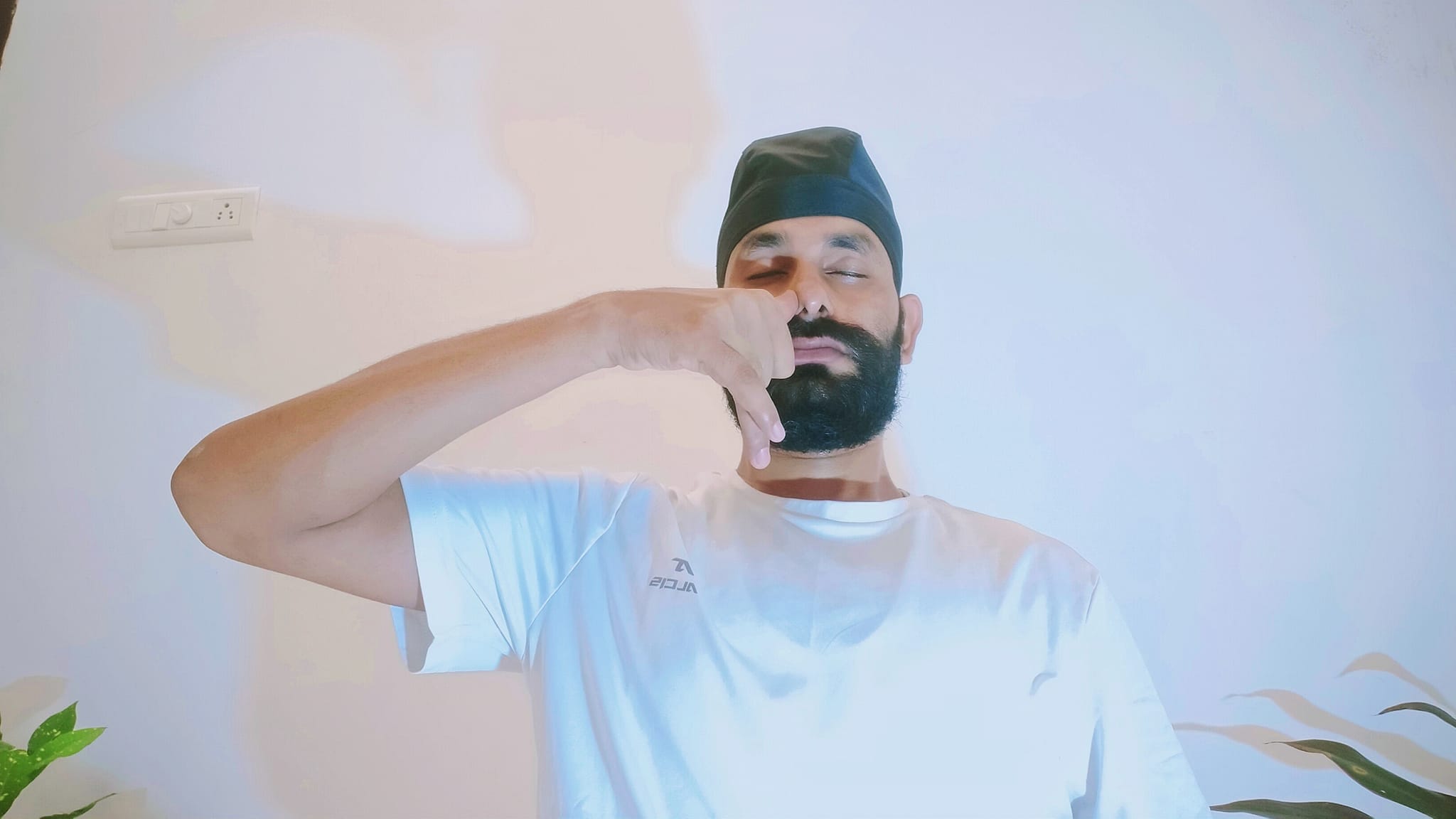
What should be the postion for meditaion?
Posture in meditation has a direct impact on channelizing vital energies in your body. The ten vital energies are detailed in the appendix to this book. Before I elucidate the eight key elements of a good posture, I would like to draw your attention to Patanjali, one of the greatest meditators to walk on our planet in the last five thousand years. In his aphorisms, he places great emphasis on the quality of posture. He uses the term asana siddhi, perfection of the posture.
According to Patanjali, it is only after perfecting one’s posture that one advances on the path of yoga. Breath regulation (pranayama), withdrawal of senses (pratyahara), concentration (dharana), meditation (dhyana) and realization (samadhi) are only possible for a meditator if he is able to perfect his posture. I concur with this view. Perfecting your posture is a great challenge and majority of the meditators quit at the rigors it poses. By perfecting I mean to reach a state where you can sit unmoving in one posture for as long as you want without experiencing pain or numbness in your body. Your body is bound to experience a certain tiredness but without the aches. On the question of what posture one should sit in, Patanjali states sthiramsukham asanam. It means any posture you are comfortable with. This does not mean that you can completely ignore the basics of posture.
Whether a studentwrites with a fountain pen or a ball-point pen, they may be left-handed or right-handed, the teacher may have no problems provided what they scribble is legible. So, any posture you choose is okay as long as you respect the eight elements of a good posture. They are absolutely critical for the serious practitioner. Mastering correct posture is one of the most difficult aspects of meditation. Once again, if we are talking about meditating for a few minutes to feel good, posture perhaps wouldn’t even matter. You could lie down, curl up, sit on a tree, float on a river, hang upside down and be meditating. But, when you look upon meditation to lead you into a state of extraordinary bliss and supreme union, there’s absolutely no shortcut. You will have to champion the correct posture. You may be a Mozart or a Beethoven, if you want to produce good music, youhave to spend time at the piano. I remember a time in the Himalayas when I thought I would never be able to walk normally again. My knees used to hurt so bad that I couldn’t even move a step without the support of a stick. This was the result of prolonged meditation where I would sit still for a minimum of ten hours to a maximum of twenty-two hours at one go. It was the most difficult thing I’d ever done in my life, but I persisted. With that excruciating pain in my knees I sat down for meditation each day.
A few months later, those aches and pains first subsided and then went away completely. I began to enjoy sessions of deep meditation because my body was no longer an impediment. In the earlier stages, you experience aches and pains in different parts of your body. You can overcome some of those by doing yoga or stretching regularly, but for the most part, the only way to get past this hurdle is by persisting with your meditation. I reiterate, body pain is not an issue for an amateur meditator because such a meditator ends his or her session whenever they encounter a hurdle. It is only an issue when you tread the path of meditation with seriousness and dedication, continuing to build the intensity of your practice. Correct posture is about perfect stillness of the body. Think of an archer, a chess player, a mathematician, a scientist; how still they are when they are busy in their respective vocations. Stillness of the body fuels stillness of the mind and in turn stillness of the mind helps you be more still hysically. They complement each other. When you progress on the path of meditation, ultimately, there should come a point when you are able to rise above the body consciousness. Then alone, you’ll truly feel that this body is an instrument, it is supposed to serve you and not the other way round. Perfection of the posture is essential for a serious meditator. It’s the prana of meditation. This does not mean you have to sit still for several hours and bear the tremendous pain like I did (unless you want to walk the extraordinary path of meditation). But whenever you do sit down to meditate, it could be just for fifteen minutes, make it a point to sit like a rock, like dead wood. This will allow the energies in your body to be still. Calmness will start to envelope you automatically. The act of meditation will become more joyous and the rewards will come quicker. I cannot overstate the importance of correct posture. I could not stress it enough. An important point to remember is that your ability to sit still, the duration of staying in one posture increases gradually. If today you can sit still for 20 minutes, it may take you one year worth of sincere practice to reach 40 minutes. Most meditators, with effort and determination, can sit still for 45 minutes. The most difficult stretch to overcome is 45 minutes to 90 minutes. This may take another year. Once you are able to sit still for 90 minutes and meditate without aches and pain, you will jump in ten minute increments. Your ability to hold your meditative posture will increase to 100 minutes, 110 minutes, 120 minutes and so on. The next major hurdle will come at three hours. From a still posture of three hours to perfecting it so you may sit still for four hours at a stretch, unmoving, can easily take another one year. Reaching the six-hour limit from four hours, is relatively easier. But let me tell you, the day you master four hours of stillness, you will be no less than a living Buddha, a siddha in flesh and bones. Anyone who can sit still for that long with full awareness becomes a fountain of super-knowledge. Your thoughts gain so much power that whatever you sincerely desire starts to manifest in your life without a doubt. The more concentrated a thought, the more powerful it is. Even if you don’t meditate but just learn to sit still, you will gain much from it. There are many forms of meditation and some of them don’t even require the meditator to be sitting, let alone sitting in a posture. I’ll touch upon them briefly. For now, the meditation we are covering is seated meditation. It requires that you to sit still with mindfulness. In order to do so, there are eight key elements of a good posture:
Cross Legged
There are many ways of sitting cross-legged. You can choose any way that you are comfortable with. Sitting cross legged is important because it helps you control the apana vayu, descending energy. If you have a specific medical condition that prohibits you from sitting cross legged on the floor, you can do the next best thing: sit in a chair. At any rate, at least cross your feet and not sit with your feet apart. Joining of the hands and feet is important to allow a complete circulation and flow of energy within you.
Straight Back
Once you learn to meditate with a straight back, you become qualified to do many advanced yogic practices. If you are serious about progressing on the path, a straight back is a non-negotiable requirement then. A straight back helps in channelization of prana and samana vayu, or vital life force and thermal energy respectively. Thermal energy further acts as the bridge to allow fusion of vital life force and descending energy. From that fusion begins the arousal of the primordial energy, more famously known as kundalini or the serpent power.
Relaxed Arms
Do not stretch your arms. The natural shape of your elbows is slightly bent, so keep it like that. Keep them relaxed. The posture of keeping your arms stretched and straight, where your wrists touch your knees, is not a practical posture for intense meditation. If you keep your arms perfectly straight, soon they’ll get tired and cause distraction.
Joined Hands
Your hands can cross each other or they can be one on top of another. Putting your left hand on top of the right keeps your body warmer, influences the right brain and fuels your feminine aspect. Resting your right hand on top keeps your body cooler, affects your left brain and boosts your masculine energy. These differences are quite subtle but as you progress, you will notice even the subtlest of changes caused by the minutest of modifications in your posture. Ideally, your thumbs should join each other at the tips.
Straight Head
Your neck and head should be in straight line. It facilitates channelization of the udana vayu, ascending energy. When the primal energy travels upwards through the central channel, it needs a straight line; think of laser beams. Neckandhead, therefore should be straight. Further, it facilitates easier movement of the vayana vayu, diffusive energy from neck upwards. A subtle but critical point to be noted here is that your neck must not be stretched. Your neck has a normal minor hook that should be maintained. Basically all parts of your body should be relaxed and in normal position; still, but relaxed.
Still Gaze
This is the unfailing sign of a true yogi. With practice and experience, you will find your gaze becoming increasingly still. A still gaze channelizes the five secondary energies. Any hurdles from hiccups, sneezing, burping are removed by perfecting your gaze. Still gaze aids superior concentration which in turn helps the free flow of energy in your body, and when energy starts to flow freely, pain and numbness begin to disappear. Restraining movement of the eyeballs is one of the last hurdles in perfecting a still posture.
Gentle Smile
This may seem insignificant but it’s an important factor in acquiring overall stillness of the body and mind. Once you are firmly seated, keep your body firm but relaxed. Relax your facial muscles and just smile gently. A subtle breeze of calmness starts to flow when you smile gently. You can try it right now; just relax your face, lower your gaze keeping your eyes half-closed and smile. The frown, the tension will disappear immediately.
Position of Tongue and Teeth
Your tongue should touch the front part of your palate. It is particularly important because formation of saliva can interfere with your perfect stillness. If your tongue touches the palate, any saliva keeps moving down on its own. Otherwise, you’ll find yourself swallowing every now and then. The act of swallowing raises body consciousness. Teeth should be slightly parted and lips just joined – no clenching of teeth, no pouting of lips, just a normal, natural body posture.
Your posture should be firm but not tense. It should be steady and comfortable. You should neither be stiff as a robot nor pliable as a child’s plastic doll. And, please don’t forget to smile gently while you meditate; there’s enough sadness in the world as it is. Meditation may be hard but it’s not sad. When you sit down to meditate you exude a certain energy, a good posture with all the above mentioned eight elements greatly helps in the free flow of that energy. With your legs crossed, hands joined, still gaze and straight back, channelization and retention of the energy occurs most naturally. With a comfortable posture and natural stillness, it becomes much easier to build the concentration required for great meditation.




